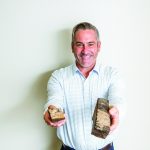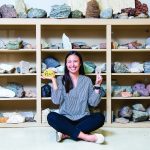Interdisciplinary courses and research define Cal Lutheran’s new Earth & Environmental Science (EES) program and the two new faculty who are carrying it forward. In the years ahead, department chair paleoecologist Robert Dull wants EES students to attain a broad education in earth system science—climate, ecology/biogeography and geomorphology. From there, they can specialize in everything from earth’s deep history to today’s environmental policy.
INTERDISCIPLINARY BY NATURE
“We live in a rapidly changing global environment with many human-caused environmental issues that need to be addressed through science and policy,” says Associate Professor Dull, Ph.D. “My hope is to help equip our students to be transformative leaders in the global effort to create a more just and sustainable environmental future.”
The new department seeks to understand Earth’s history—past, present and future. The program draws from biology, chemistry, geology, economics, political science, law, and ethics. It investigates how the Earth behaves; records its origin, rocks and landscapes; and learns about geological processes affecting modern environmental and ecological systems.
Beyond required foundational courses, students can tailor the program to their
interests by taking Environmental Chemistry, Marine Biology, Environmental Ethics, Economics of the Environment, Geophysics, Geology, Invertebrate Paleontology and more.
Dull is also a science commentator on climate-related disasters for TV (Science Channel, Smithsonian Channel) and documentary films. “My research and training span several overlapping fields: plant ecology, geography, geology and cultural anthropology/archaeology,” says Dull. “My courses seek to elucidate both human impacts on environmental systems
and the impacts of environmental change on society.”
He is joined by paleoclimatologist Megan Fung, Ph.D., assistant professor, who was awarded a National Science Foundation fellowship and developed a climate change board game activity published in Nature Geoscience. “I use the fossil record to understand the response of marine biota to changes in their environment, such as sedimentary processes, sea level, temperature, ice volume and ocean chemistry.”
MAJORS & CROSS-OVER COURSES
The EES program offers two majors.
- Environmental Science. Prepares future environmental scientists to conduct research to identify, control, or eliminate sources of pollutants or hazards affecting the environment or public health.
- Geology. Trains future geologists, who work to better understand Earth’s history, in order to foresee how past events and processes might influence the future.
Fung covers most of the Geology courses, and Dull takes Environmental Science and the ecological side, with a bit of archaeology thrown in. They’re both excited to be teaching two cross-over courses next year.
- Climate Change. Fung’s course investigates how contemporary climate change compares to climate variations over Earth’s long history, including our scientific understanding of its causes and its local and global impacts. One assignment Fung loves: students design and implement a climate change board game.
- Natural Hazards. Students love learning about hurricanes, tsunamis, floods and earthquakes. Dull likes to have them take a deep dive into a local topic like the Thomas & Woolsey fires or the Northridge Earthquake. This personal proximity drives student curiosity and engagement.
Dull and Fung look forward to team-teaching a research class in historical ecology and paleoclimatology. “We’re already planning a field program where we’ll extract sediment cores from lakes, salt marshes and wetlands throughout California and perhaps down into Baja California,” Dull explains. “Those cores will be analyzed in our Cal Lutheran labs to reconstruct the environmental history of the region, like climate, vegetation change, wildfire regimes.”
RESEARCH FOR TODAY’S WORLD
Dull has spent two or three months a year in Nicaragua and El Salvador since 1996. Most of his research aims to elucidate the ongoing and ever-changing relationships between human beings and their physical environments. “Widespread historical and instrumental records of environmental change usually go back less than a century,” he says. “I use ‘proxy’ methods
from paleoecology and paleoclimatology to understand how human-ecological systems and landscapes changed over hundreds to thousands of years before the historical period.”
Fung is examining an important geologic warming event, which occurred 56 million years ago, yet can be related to our current state of climate change and is often cited as the best analog for present-day CO2 rise. “One of my goals is to help students understand how the geologic record, such as the fossil shells of microscopic organisms, acts as an archive for past climate states and how we can use this knowledge to better understand current and future climate change,” she says.

